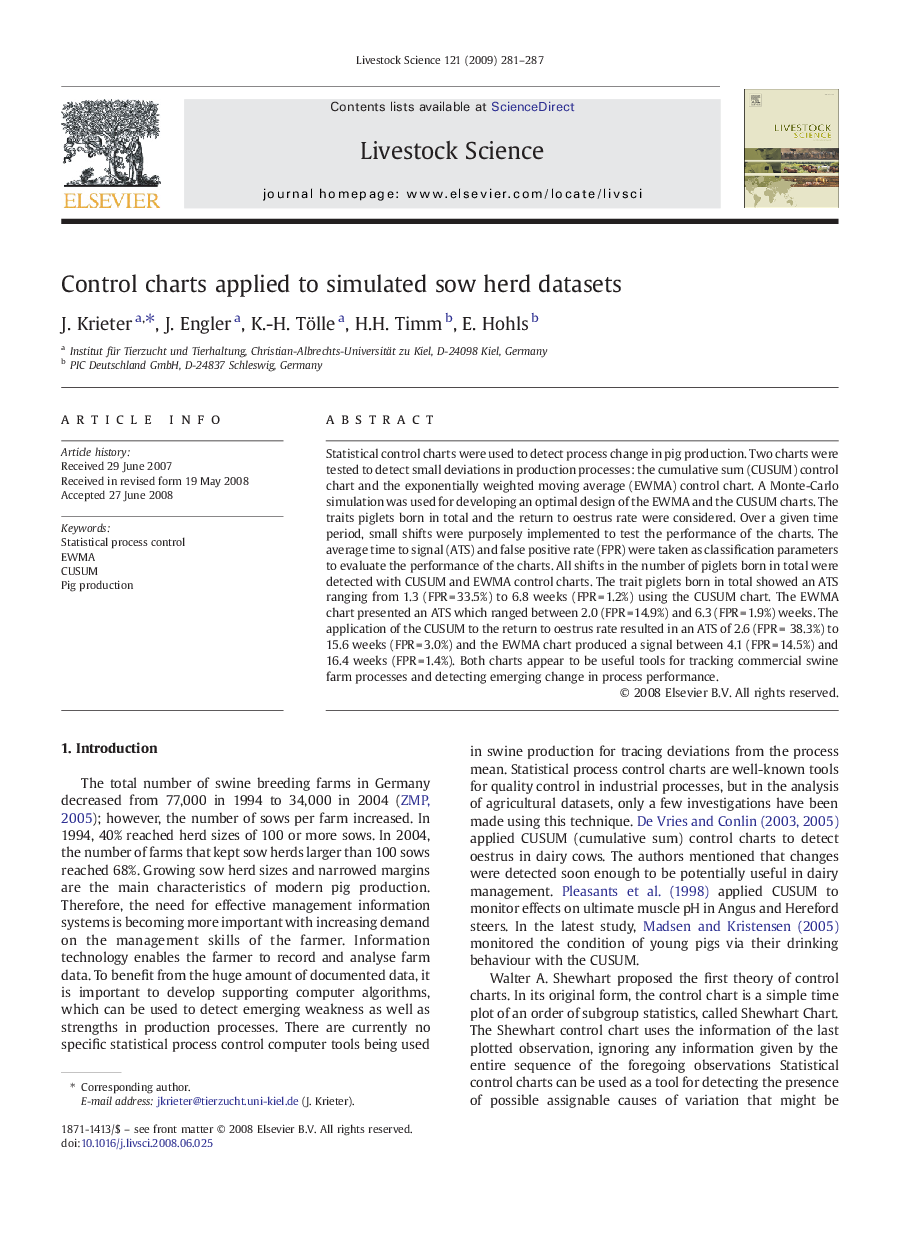| Article ID | Journal | Published Year | Pages | File Type |
|---|---|---|---|---|
| 2448275 | Livestock Science | 2009 | 7 Pages |
Statistical control charts were used to detect process change in pig production. Two charts were tested to detect small deviations in production processes: the cumulative sum (CUSUM) control chart and the exponentially weighted moving average (EWMA) control chart. A Monte-Carlo simulation was used for developing an optimal design of the EWMA and the CUSUM charts. The traits piglets born in total and the return to oestrus rate were considered. Over a given time period, small shifts were purposely implemented to test the performance of the charts. The average time to signal (ATS) and false positive rate (FPR) were taken as classification parameters to evaluate the performance of the charts. All shifts in the number of piglets born in total were detected with CUSUM and EWMA control charts. The trait piglets born in total showed an ATS ranging from 1.3 (FPR = 33.5%) to 6.8 weeks (FPR = 1.2%) using the CUSUM chart. The EWMA chart presented an ATS which ranged between 2.0 (FPR = 14.9%) and 6.3 (FPR = 1.9%) weeks. The application of the CUSUM to the return to oestrus rate resulted in an ATS of 2.6 (FPR = 38.3%) to 15.6 weeks (FPR = 3.0%) and the EWMA chart produced a signal between 4.1 (FPR = 14.5%) and 16.4 weeks (FPR = 1.4%). Both charts appear to be useful tools for tracking commercial swine farm processes and detecting emerging change in process performance.
